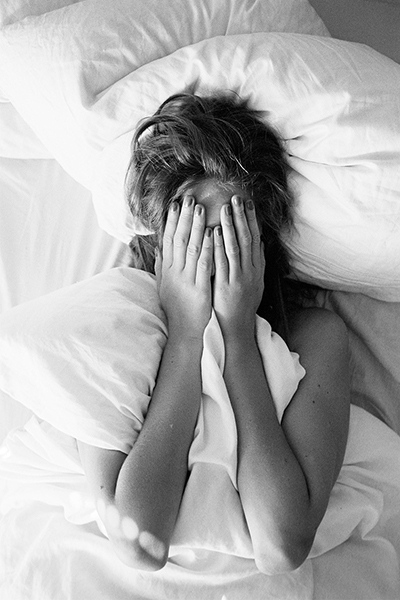I’ve always been a night owl, but after a few months spent zig-zagging the globe for work and pleasure, my sleeping patterns hit an all-time low. I’m not big on sleeping pills, but after failing to fall asleep before 2.30 a.m. for over a week, I decided to try something wacky. To cure my insomnia, I cut back on sleep even further.
It sounds weird, I know, but it’s really no stranger than what I’d been doing for days: Lying awake until the wee hours thinking about how tired I will be in the morning and mulling over whether the Gilmore Girls reboot should have been allowed to happen (answer: no). There’s a name for this technique too—”sleep restriction therapy” (SRT)—and studies suggest it can help you get more shut-eye in the long run. So hold your judgement and hear me out, because strangely, it worked.
Now is when I’m going to say something obvious, but important: Guys, seek expert advice before you start cutting back on sleep—it’s not always a healthy option. Got it? OK, let’s continue.
Here’s What Happened…
When you’re dealing with insomnia and lying in bed for hours while sleep evades you, the natural instinct is to try and get to bed earlier. Duh, right? Wrong, folks. Sleep restriction therapy research suggests that by deliberately restricting the number of hours you sleep, you can slowly regain a better routine and beat insomnia.

When trying SRT you need to pick a firm time to wake up in the morning and stick to it no matter what. Over the first week, work out how much sleep you are getting on average each night. Then, force yourself to stick to this sleep schedule—only instead of lying awake in bed frustrated and debating the benefits of Gilmore Girl’s revival, you have to stay up and away from the bedroom. For example, to rise with my alarm clock at 7.30 a.m., I was averaging an underwhelming four-and-a-half hours during this period. So, to try SRT, I had to stay awake and far away from my cosy sheets until four-and-a-half hours before rising time—which is 3:00 a.m. Over time, you can gradually bring that bedtime earlier and earlier to increase the hours of shut-eye enjoyed each night.
The concept governing this technique is called hormesis—a biological phenomenon whereby a beneficial effect results from exposure to low doses of something that would be dangerously toxic in higher doses. So, while depriving yourself of too much sleep could certainly be lethal, moderate doses of SRT could be good for you.
As any procrastinator already knows, giving yourself less time to do something seems to mean it just gets done more efficiently. In the same way, going to bed later and reducing the amount of time you have to sleep challenges your body to meet the raised stakes, and work magic.
I tried this myself, remember, and while I didn’t struggle to stay up and away from bed until 3:00 a.m., getting out of bed in the morning was admittedly pretty tough. I spent the first few days in a blurry daze—but I also didn’t lie awake overthinking everything, and slept uninterrupted through the night. Some studies tested SRT over four weeks, increasing the amount of sleep gradually, and saw good results. I tried it for just one week, gradually bringing my bedtime back to 11:30 p.m. Through this technique, I was able to stick to the relatively normal sleeping pattern for about two months—until another overseas plane ride set me back.


